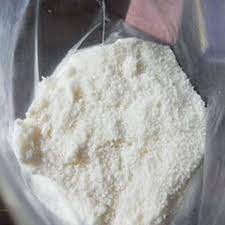The opioid epidemic has been a major public health crisis in the United States for years, with prescription opioids and heroin being the main culprits. However, in recent years, a new and even more dangerous threat has emerged: synthetic opioids.
What Are Synthetic Opioids?
Understanding Synthetic Drugs
Before we dive into synthetic opioids, it’s important to understand what synthetic drugs are. Synthetic drugs are man-made substances that mimic the effects of illegal drugs like marijuana, cocaine, and heroin. They are often marketed as “legal” alternatives to these drugs, but they can be just as dangerous, if not more so.
Synthetic drugs are created in a laboratory and can be made from a variety of chemicals. They are often sold as powders, pills, or liquids and can be easily purchased online or in stores. These drugs are often labeled as “not for human consumption” to avoid legal repercussions, but they are still used for recreational purposes.
What Are Synthetic Opioids?
Synthetic opioids are a type of synthetic drug that mimics the effects of natural opioids, such as morphine and codeine. They are often used for pain management, but they can also produce a euphoric high, making them popular for recreational use.
Synthetic opioids are created by altering the chemical structure of natural opioids, making them more potent and addictive. They are often cheaper and easier to obtain than prescription opioids, making them a dangerous alternative for those struggling with addiction.
The Lethal Impact of Synthetic Opioids
The Rise of Synthetic Opioid Overdoses
by Pharmacy Images (https://unsplash.com/@pharmapix)
According to the Centers for Disease Control and Prevention (CDC), synthetic opioid overdose deaths have increased by 45% from 2016 to 2017. In 2017 alone, there were over 28,000 deaths involving synthetic opioids, making them the leading cause of opioid overdose deaths.
The most commonly used synthetic opioid is fentanyl, which is 50 times more potent than heroin and 100 times more potent than morphine. It is often mixed with other drugs, such as heroin or cocaine, without the user’s knowledge, leading to unintentional overdoses.
The Dangers of Synthetic Opioids
Synthetic opioids are extremely dangerous for several reasons. First, they are much more potent than natural opioids, making it easier to overdose. Second, they are often mixed with other drugs, making it difficult for users to know exactly what they are taking. Third, they are often made in illegal labs with no quality control, leading to inconsistent potency and potentially deadly substances.
The Impact on Communities
The rise of synthetic opioids has had a devastating impact on communities across the country. Not only are individuals struggling with addiction and overdoses, but first responders and healthcare workers are also facing increased risks and challenges.
Synthetic opioids are so potent that even a small amount can be deadly, making it difficult for first responders to administer life-saving measures. In addition, the influx of synthetic opioids has overwhelmed hospitals and emergency rooms, leading to shortages of life-saving medications like naloxone.
Legal Synthetic Opioids
The Dangers of Legal Synthetic Opioids
by Maxim Berg (https://unsplash.com/@maxberg)
While most synthetic opioids are illegal, there are some that are legally prescribed for pain management. These legal synthetic opioids, such as fentanyl and tramadol, are still highly addictive and can lead to overdose and death.
In fact, in 2017, over 17,000 deaths involved prescription opioids, with fentanyl being the most commonly involved. These legal synthetic opioids are often prescribed for chronic pain, but they can also be obtained illegally and used for recreational purposes.
Examples of Legal Synthetic Opioids
Some examples of legal synthetic opioids include:
- Fentanyl: This is a synthetic opioid that is 50 times more potent than heroin and 100 times more potent than morphine. It is often prescribed for severe pain, such as in cancer patients, but it is also illegally manufactured and sold on the streets.
- Tramadol: This is a synthetic opioid that is used to treat moderate to severe pain. It is less potent than fentanyl, but it can still be addictive and lead to overdose.
- Methadone: This is a synthetic opioid that is used to treat opioid addiction. It is often used as a replacement for other opioids, but it can also be abused and lead to overdose.
List of Synthetic Opioids
Some other synthetic opioids that are commonly used include:
- U-47700: This is a synthetic opioid that is 7.5 times more potent than morphine. It is often sold as a white powder and can be injected, snorted, or taken orally.
- W-18: This is a synthetic opioid that is 100 times more potent than fentanyl. It is often sold as a white powder and can be mixed with other drugs, making it even more dangerous.
- AH-7921: This is a synthetic opioid that is 80 times more potent than morphine. It is often sold as a white powder and can be injected, snorted, or taken orally.
How to Combat the Lethal Impact of Synthetic Opioids
Education and Awareness
by BATCH by Wisconsin Hemp Scientific (https://unsplash.com/@batch_by_whs)
One of the most important ways to combat the lethal impact of synthetic opioids is through education and awareness. It’s important for individuals to understand the dangers of these drugs and to know how to recognize the signs of an overdose.
In addition, healthcare providers should be educated on the risks of prescribing synthetic opioids and should consider alternative pain management methods for their patients.
Stricter Regulations
Another way to combat the lethal impact of synthetic opioids is through stricter regulations. This includes cracking down on illegal labs that produce these drugs and implementing stricter guidelines for prescribing legal synthetic opioids.
Access to Treatment
For those struggling with addiction to synthetic opioids, access to treatment is crucial. This includes medication-assisted treatment, counseling, and support groups. It’s important for individuals to have access to these resources to help them overcome their addiction and prevent future overdoses.
Takeaways
Synthetic opioids are a dangerous and deadly threat that is plaguing communities across the country. They are more potent and easier to obtain than prescription opioids, making them a dangerous alternative for those struggling with addiction. By educating individuals, implementing stricter regulations, and providing access to treatment, we can combat the lethal impact of synthetic opioids and save lives.










Leave a comment
You must be logged in to post a comment.